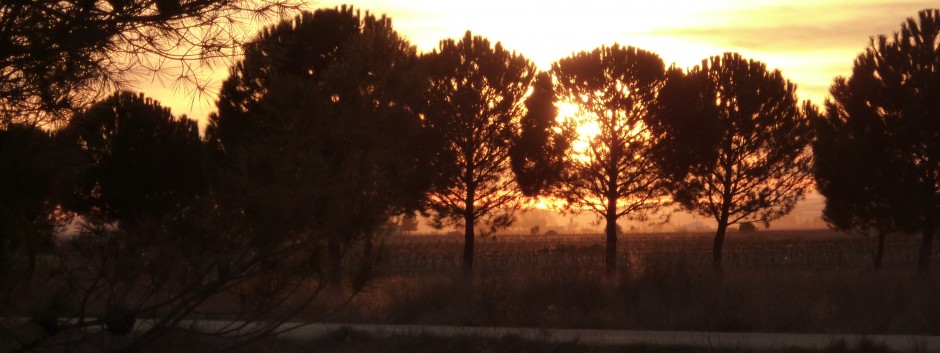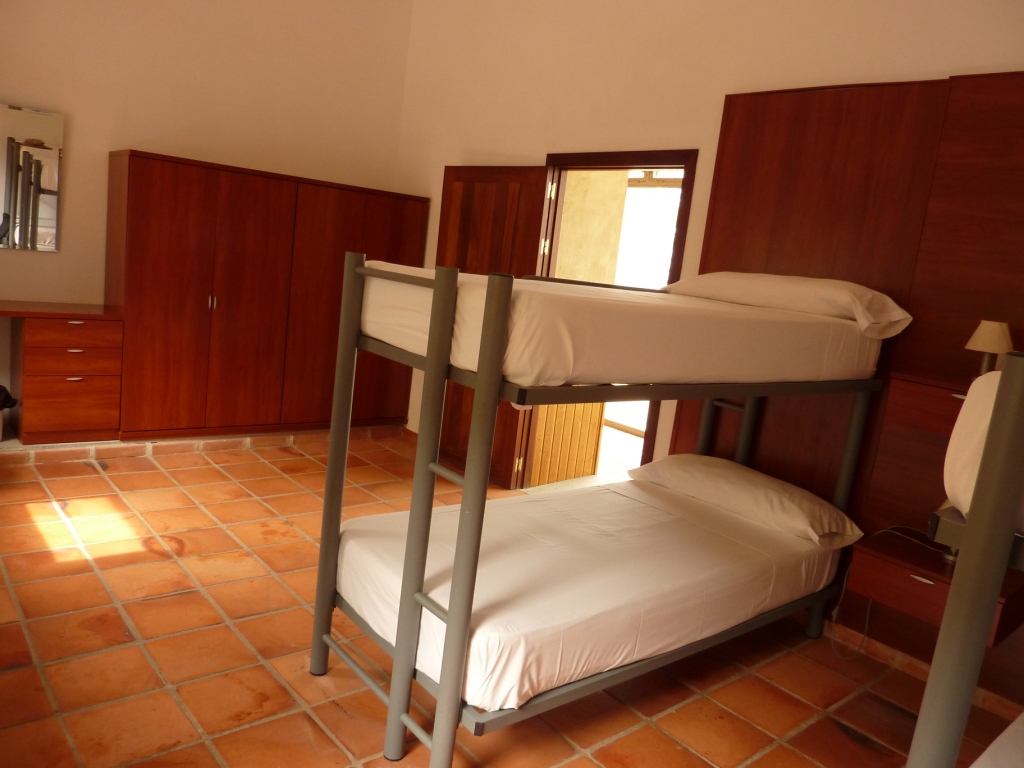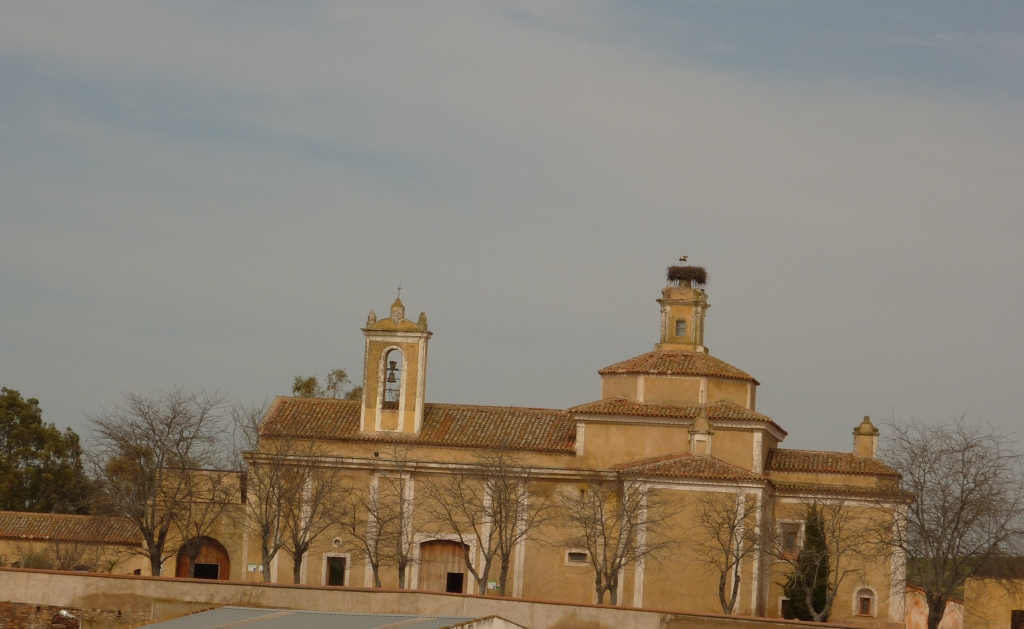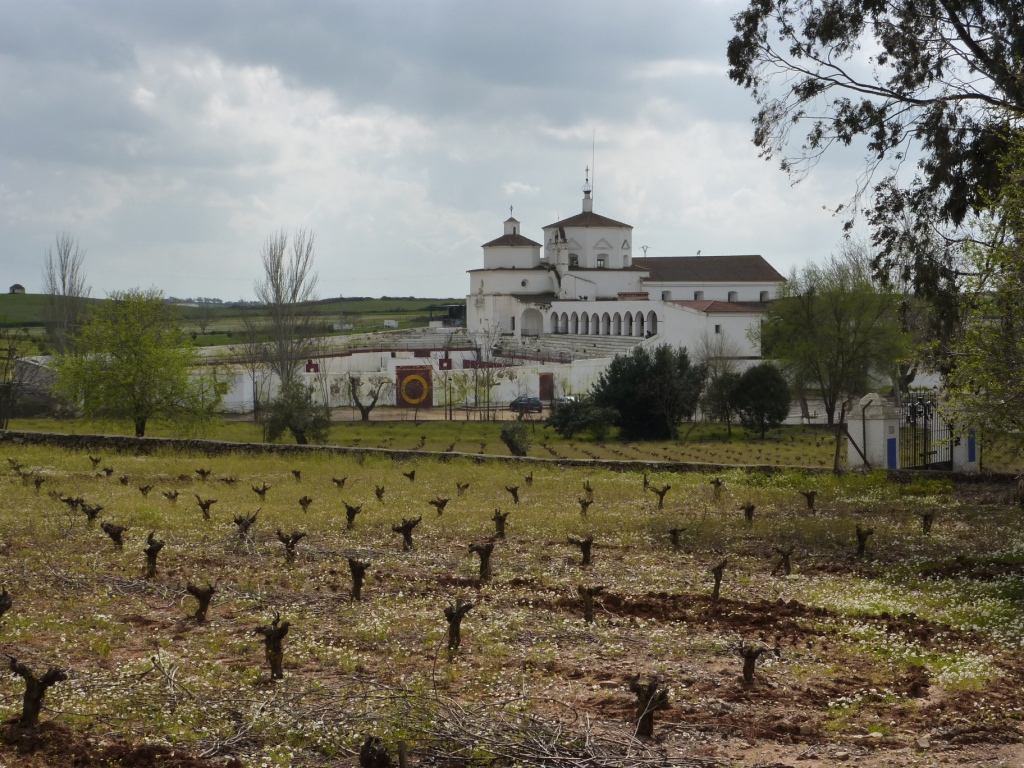Stereotyping the French.
My last post on the Via de La Plata, describes an early morning when I walked a few kilometres to Fuente de Cantos. Having slept out for two nights I was wondering about a shower. The Albergue was in a former Franciscan convent part of which is a museum dedicated to the famous and local painter Francisco Zurbarán. I was greeted by a smiling hospitalera who asked me if I wanted clothes washing. She was just about to wash the sheets from the previous night, took all my dirty laundry and showed me to the dormitory.
At this point I was no expert on Hostels on the Camino, but I guessed that wardrobes, desks, a mirror and sheets, as well as only four beds in a large room would be unusual (and so it proved). The shower was perfect and there was a salon with sofas and books to read. I sunk into a comfortable chair believing that this was luxury itself. It was a Parador of a hostel. One of the books on the table was a guest book. It was full of superlative comments on this ancient convent, now hostel. However, the most recent was signed by a group of French pilgrims. Theirs was a positive assessment followed by a series of criticisms only some of which I still recall. “It is a shame that the chairs to the desks in the dormitories are a bit too high to fit legs under the table comfortably while writing”. “The arrangement of the sofas in the Salon could be much better designed to break up the space most of which is taken up at present as a passageway.” The final one was, “While we acknowledge that the beds are provided with sheets, this is not altogether necessary and does not justify the 10 euro cost for a night here.” (2010).
Me? Prejudiced?
Now I have nothing against the French, I lived there for eight years and found treasures beneath the surface. Yet this, I thought at the time, is typical. They think that their language is the world’s finest and are offended when we speak it badly; they keep to themselves and don’t share much……………Well, I was half aware that I was voicing my prejudices to myself and read the French comments again, just to check. Yes, it was typical. Then a group of Germans arrived, just five of them but it could have been an artillery battalion from the noise they made. I guessed they were snorers. These were followed by a couple of cyclists who bagged the last two beds, they usually do, leaving us walkers to sleep on the floor.
I didn’t ever catch up with the French who had written the cutting comments but I did meet the Germans again from time to time who turned out to be witty, polite, charming and well-informed. Later on when stretches of the Camino were very boggy I learned to follow their trail which always picked out the driest, most firm path. They knew what they were up to on a Camino. I really had no clue.
Recognising my prejudices.
Over a year later and with two thousand kilometres of Camino experience I was starting to notice my prejudices: I, of course, had considered myself free of any distortions in my judgement, being a liberal, tolerant sort. I began to observe that I certainly preferred some people I met to others. Some I really preferred not to sleep too closely to, especially side by side, as was occasionally inevitable. Smell, noise or dirt often came into my reckoning as I calculated the desirability of company. I noticed, though, that less obvious traits affected my willingness to approach or welcome approaches from other pilgrims: how they chose their bed, or washed up (or not) after a snack; whether they were “know it alls”; or if they were cyclists or tourists whom I regarded as second class pilgrims. It became clear to me that I was prejudiced and that I carried a lot of judgements in me of which I had not ever been aware. At the same time, as a result of reading Mark’s gospel during the Via de La Plata and the Gospel of Luke on the Camino de Levante, I felt uncomfortable with uncovering my prejudices and not knowing the extent of the deposits I was beginning to expose seam by seam. The gospels are inclusive, not exclusive and those around Jesus a rabble of all sorts. Also, prayer had become an established part, even a continuous part of my day. One of my prayers of repetition was ,”Lord, let me know you more clearly, follow you more nearly and love you more dearly.” This led to an important insight for me, even though I have heard words describe it all my life.
After finishing the Camino de Levante in 2011, I continued my pilgrimage North through France, heading for Iona, a sacred Isle off the West Coast of Scotland. Much had happened to me in these previous two years in my spiritual development, a development full of discontinuities. The route from Irun to Dieppe took nearly two months and I felt I was being trained with a curriculum which only revealed itself in unexpected ways and unlikely places.
On the Way to the little village of St. Catherine de Fierbois, just south of Tours, while repeating the prayer about knowing, loving and following Jesus, I added, “and it would help me if I met you.” I was, I suppose addressing Jesus, but I’m never quite sure with God.
I had some trouble finding the lodging for tourists and arrived ready for bed. There was already a pilgrim established in the house who looked more like a tramp than I did. He invited me to sit with him in the garden while he smoked, so I do so out of politeness. He began to tell me about his caminos. He was, indeed, a permanent pilgrim, constantly on the move. While he told me about the loss of his wife I noticed that he seemed to be very peaceful in an infectious way. He explained how the Camino left him free to do nothing but enjoy being alive. He was in his late sixties, older than I was, and I could identify with all he was saying about detachment, letting his children be, so they could be who they are, enjoying his grandchildren and the way that, while walking, he became one with nature. I don’t know if I said anything, or certainly very little but by the end I felt we were deep friends. This sort of conversation and instant friendship is pretty common on the Camino so I welcomed it. We said goodnight and goodbye, for he would be leaving earlier than me. Also everyone I met was going in the opposite direction so I didn’t ever see them again.
When I awoke the following day, I remembered the conversation. What then came to my mind was the meeting of the disciples with Jesus on the road to Emmaus. I recalled my prayer of the previous day and I realised, “Of course, I met you last night”.
Transforming Prejudice.
I still have my prejudices, many of which are instinctive, primitive reactions, olfactory probably. That I have them doesn’t bother me now but I try to be alert to any recoil I have from people. When I am able, I act against my inclination, welcoming those whom I would once have avoided, moving towards an embrace if appropriate. These moments of friendship are charged with good energy. They nourish the whole person. It is about “Seeing Christ in the other person”, as I had realised that morning I had seen Christ in the smoking pilgrim. Love is present. It is actually very simple. I can understand how Ignatius and other saints would kiss people’s wounds. (Ignatian principle of Agere Contra) This is not masochism, quite the opposite: it is intimacy in the fulfilment of self as one in body with Christ.
I sometimes wonder if my children would understand anything I write in this blog – or the French for that matter.
Footnote: there is great uncertainly about the hostel’s future in Fuente de Cantos and others which were run by the Regional Authority of Extremadura. As part of budget cuts, some of the hostels and camp-sites are closed for the moment. This may affect the next hostel on the route which was in a hermitage attached to a bullring in Pueblo de Sancho Perez. It would be a tragedy to lose this one which was also very classy inside.




